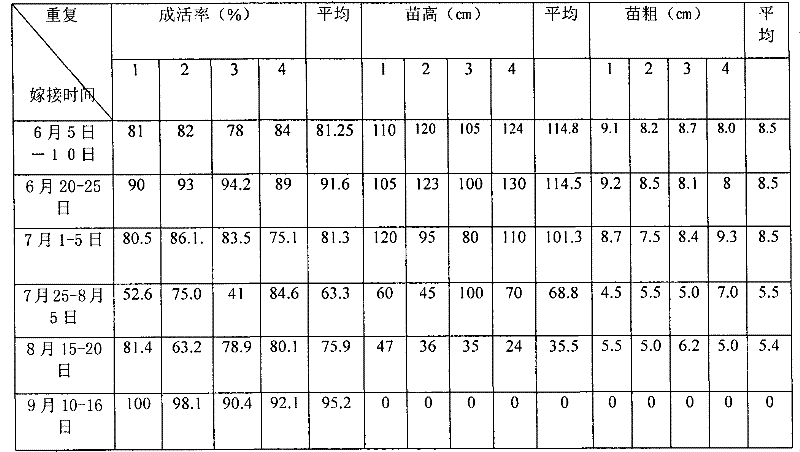Method for quickly improving outplanting rate of culture of kiwi fruit seedlings
A kiwifruit, fast technology, applied in botany equipment and methods, horticulture, cultivation, etc., can solve the problems of low yield, failure to meet grafting standards, and unequal grafting methods
- Summary
- Abstract
- Description
- Claims
- Application Information
AI Technical Summary
Problems solved by technology
Method used
Image
Examples
Embodiment Construction
[0023] 1. After the kiwi fruit matures from October to November, let the kiwi fruit fully ripen and soften, and pay attention to the fruit not being moldy and rotten. Squeeze out the kiwi fruit peel, take out the pulp and wash it with a gauze bag to collect the seeds. The taken out seeds are filtered and placed on indoor paper to dry, avoiding exposure to the sun. Sow in mid to late January.
[0024] 2. Greenhouses (glass greenhouses, plastic greenhouses and simple plastic sheds) and nurseries should choose sandy loam soil that is sheltered from the wind and facing the sun, with deep and fertile soil, good ventilation, convenient drainage and irrigation, and slightly acidic pH 6.5-7.0.
[0025] 3. In the greenhouse seedbed, in addition to applying sufficient high-quality base fertilizer and plowing 20 cm deep, the soil should be fine, the border surface should be leveled, and the border width should be 1.0 meters. The nursery should also apply enough base fertilizer, plow 25 ...
PUM
 Login to View More
Login to View More Abstract
Description
Claims
Application Information
 Login to View More
Login to View More - R&D
- Intellectual Property
- Life Sciences
- Materials
- Tech Scout
- Unparalleled Data Quality
- Higher Quality Content
- 60% Fewer Hallucinations
Browse by: Latest US Patents, China's latest patents, Technical Efficacy Thesaurus, Application Domain, Technology Topic, Popular Technical Reports.
© 2025 PatSnap. All rights reserved.Legal|Privacy policy|Modern Slavery Act Transparency Statement|Sitemap|About US| Contact US: help@patsnap.com



